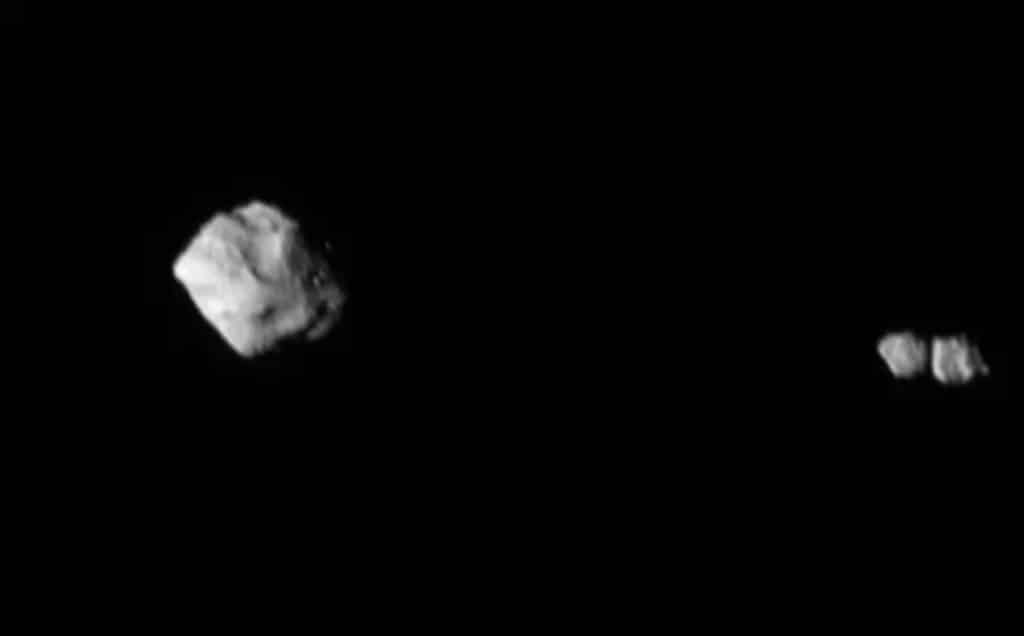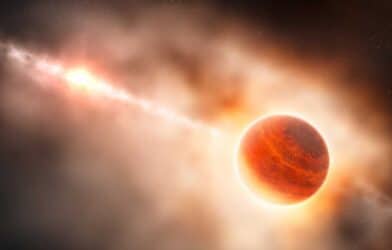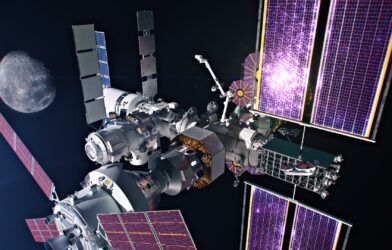A surprising discovery following the Lucy mission’s encounter with an asteroid has left NASA scientists puzzled. As the Lucy spacecraft passed by the Dinkinesh asteroid on Nov. 1, it captured data that unveiled a hidden secret — a previously unknown binary moonlet orbiting the asteroid.
The first images of Dinkinesh and its satellite taken during the closest approach suggested that the two lobes of the contact binary were aligned, making them appear as a single body. However, subsequent images, received after the encounter, revealed that Dinkinesh’s satellite is itself a binary system, consisting of two smaller objects in contact with each other.
“Contact binaries seem to be fairly common in the solar system,” says John Spencer, Lucy deputy project scientist, of the Boulder, Colorado, branch of the San Antonio-based Southwest Research Institute (SwRI), in a media release. “We haven’t seen many up close, and we’ve never seen one orbiting another asteroid. We’d been puzzling over odd variations in Dinkinesh’s brightness that we saw on approach, which gave us a hint that Dinkinesh might have a moon of some sort, but we never suspected anything so bizarre!”
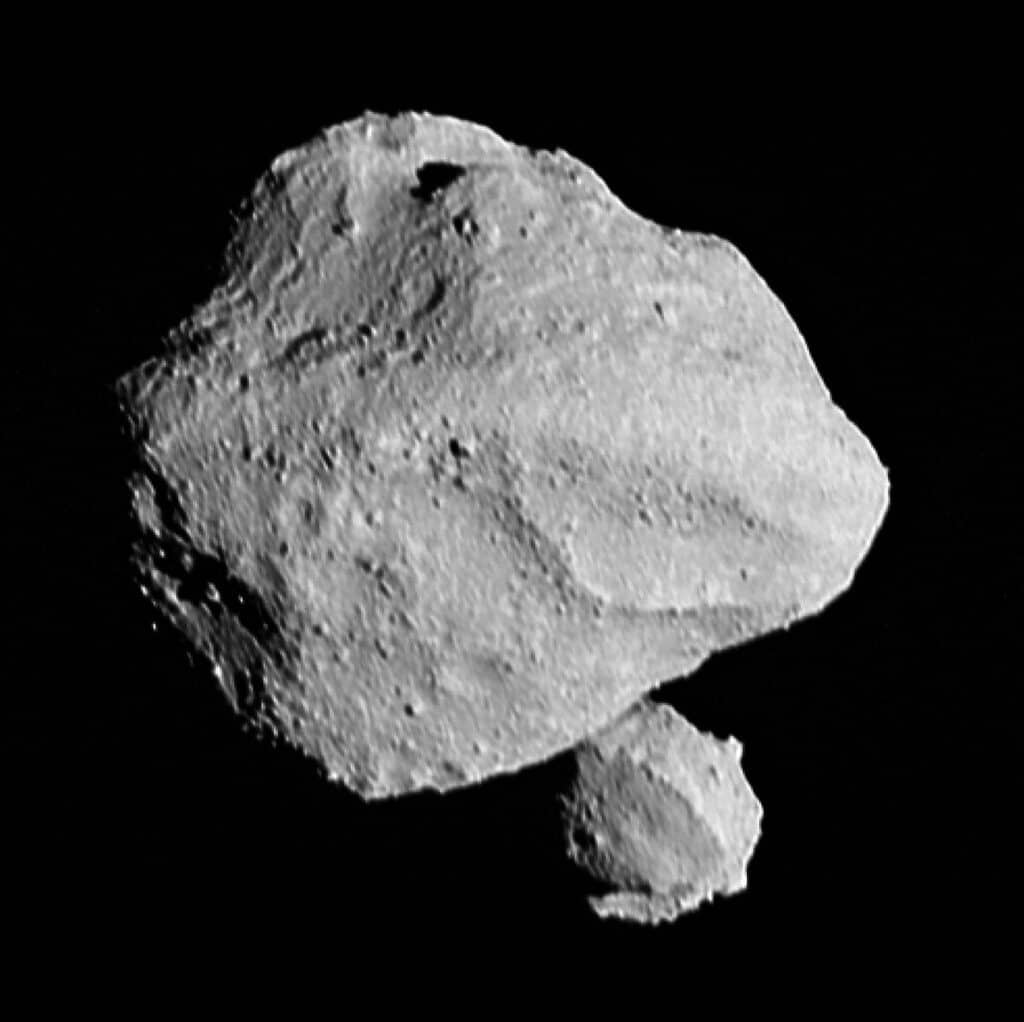
The Lucy mission’s primary objective is to survey the Jupiter Trojan asteroids, which have never been visited before. The encounter with Dinkinesh marked the mission’s first encounter with a small main-belt asteroid in January 2023 and served as a test of the spacecraft’s terminal tracking system, which tracks the target as the spacecraft passes by.
“It is puzzling, to say the least,” notes Hal Levison, the Lucy principal investigator from SwRI. “I would have never expected a system that looks like this. In particular, I don’t understand why the two components of the satellite have similar sizes. This is going to be fun for the scientific community to figure out.”
The spacecraft captured the second image of Dinkinesh and its binary moonlet approximately six minutes after the closest approach, from a distance of about 1,010 miles. Lucy traveled around 960 miles between the two released images.
“It’s truly marvelous when nature surprises us with a new puzzle,” says Tom Statler, Lucy program scientist from NASA headquarters in Washington. “Great science pushes us to ask questions that we never knew we needed to ask.”
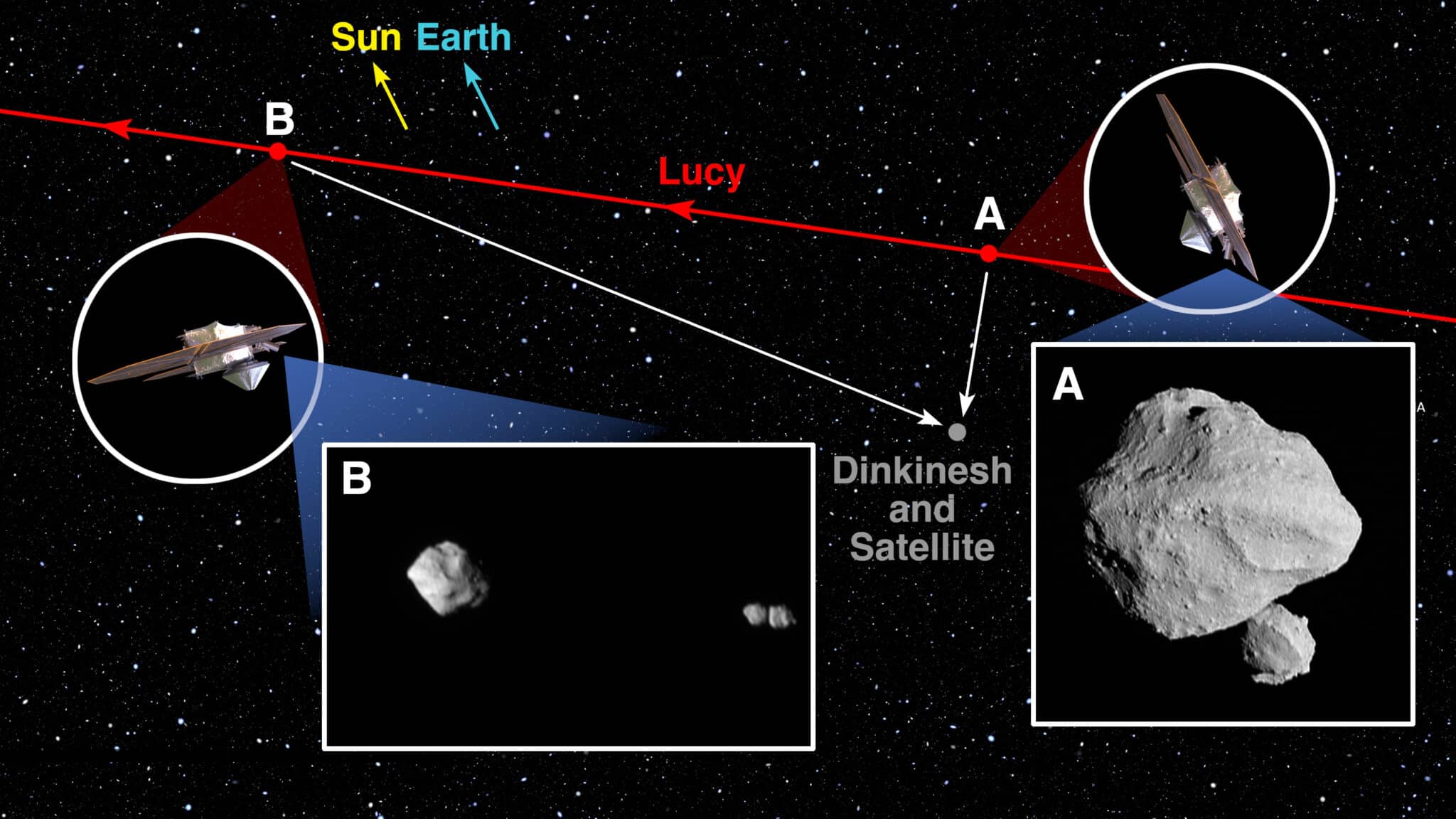
The Lucy mission is continuing to transmit and process the remaining data from the encounter. Dinkinesh and its satellite represent the first asteroids that Lucy has explored. Over the course of its 12-year journey, Lucy will visit a total of eight target asteroids, with three known satellites among them, including the recently discovered contact binary.
After passing through the inner edge of the main asteroid belt, Lucy is currently on its way back toward Earth for a gravity assist in December 2024. This maneuver will propel the spacecraft back through the main asteroid belt, where it will observe the asteroid Donaldjohanson in 2025 and continue its voyage to reach the Trojan asteroids in 2027.
The Lucy mission is led by the Southwest Research Institute, with overall mission management and oversight provided by NASA’s Goddard Space Flight Center. Lockheed Martin Space built the spacecraft, and it is the 13th mission in NASA’s Discovery Program. The program is managed by NASA’s Marshall Space Flight Center for the Science Mission Directorate at NASA Headquarters.
